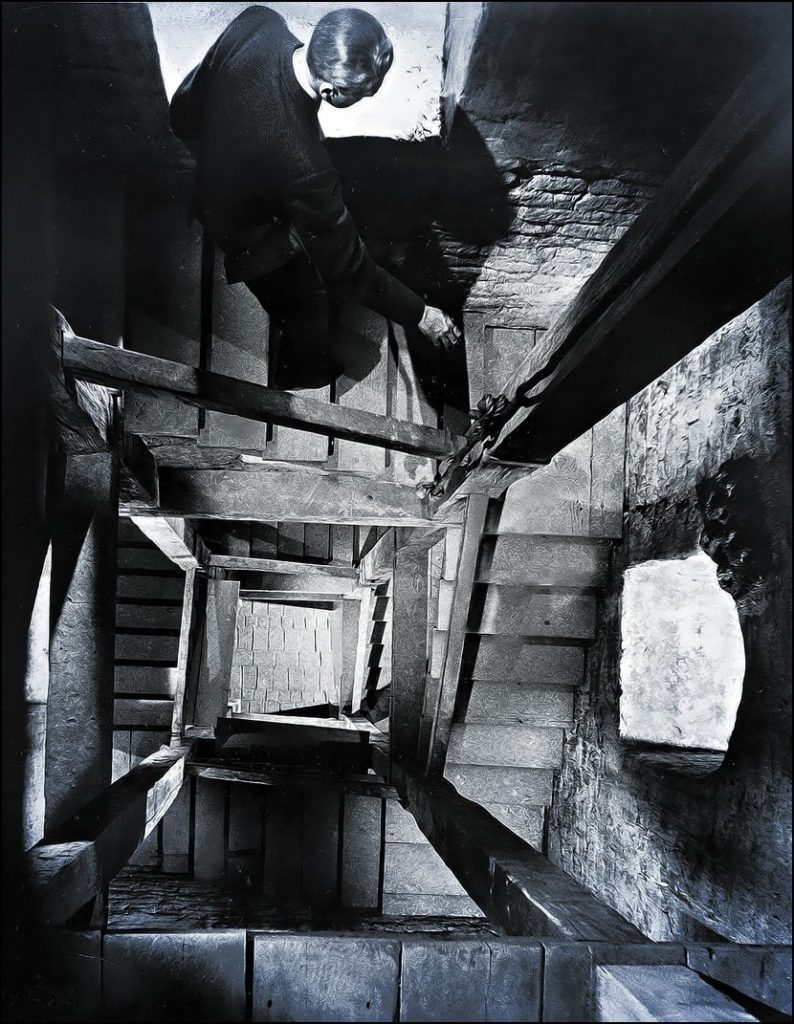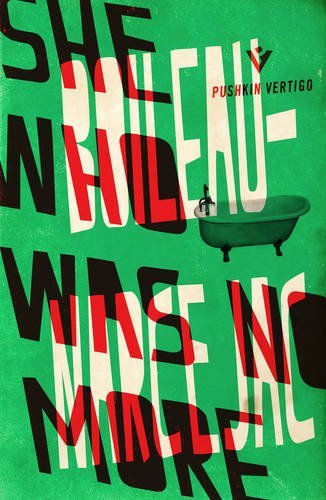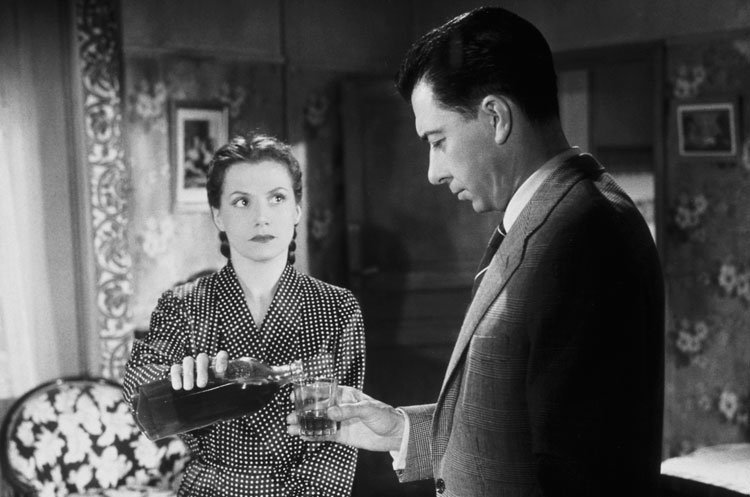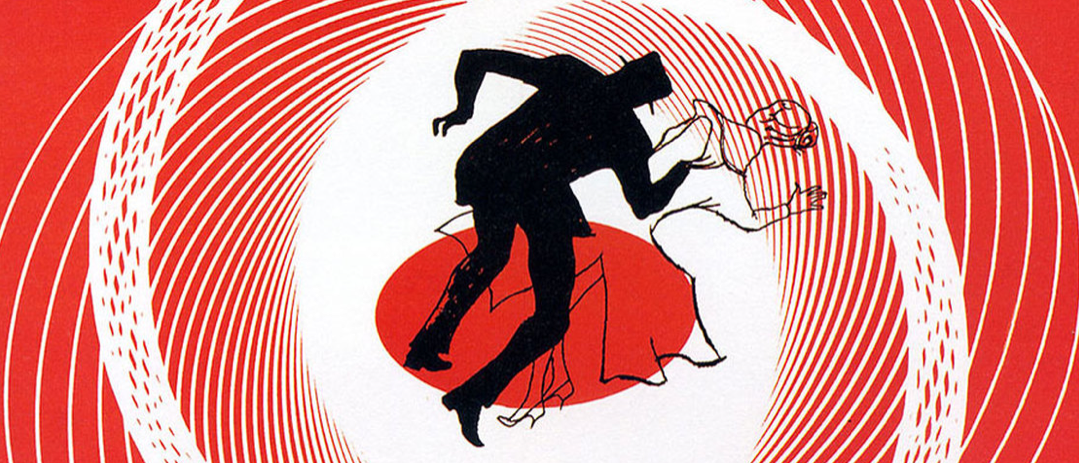When Alfred Hitchcock was searching for his next film idea, he came across the book She Who Was No More by Pierre Boileau and Thomas Narcejac. He inquired about the rights and found someone had beat him to it. It was already being adapted for the big screen by Henri-Georges Clouzot. It would become the intense classic Les Diaboliques. But now the writing team knew Hitchcock was interested and they wrote D’entre les Morts. Not to be caught off guard, he snapped it up and made the simmering mystery Vertigo. The film tops the BFI’s list of best movies of all time and many consider Hitchcock’s best.
Both of these books are now available in English translation from Pushkin Vertigo, a new collection of foreign mysteries and crime thrillers that are high on style.
 Those familiar with the 1958 film Vertigo will easily recognize the main story. An out of work cop, Flaviéres, who has vertigo gets a call from an old friend. The friend wants to hire a detective to follow his wife — though not for the usual reasons. He thinks his wife may be possessed. With little else to occupy his time, he takes the case. He trails the ethereal Madeleine around Paris, and bit by bit, he allows the distance between them fade. He eventually joins Madeleine in her wanderings and the two become a couple of ghostly characters, caught in a sort of eddy, spinning around one another but never quite getting anywhere in life.
Those familiar with the 1958 film Vertigo will easily recognize the main story. An out of work cop, Flaviéres, who has vertigo gets a call from an old friend. The friend wants to hire a detective to follow his wife — though not for the usual reasons. He thinks his wife may be possessed. With little else to occupy his time, he takes the case. He trails the ethereal Madeleine around Paris, and bit by bit, he allows the distance between them fade. He eventually joins Madeleine in her wanderings and the two become a couple of ghostly characters, caught in a sort of eddy, spinning around one another but never quite getting anywhere in life.
When Flaviéres loses Madeleine, he begins to unravel. With the Nazi invasion of Paris imminent, Flaviéres has little choice but to simply survive the war. It’s when the Allies have won and he returns to Paris that Flaviéres must fight. A woman, who looks exactly like Madeleine, appears — but she claims she is Renée Sourange. Flaviéres’ obsession to discover the truth is more dangerous than ever. He allows himself to be completely engulfed by the idea that Renée is Madeleine.
An aspect to the story that is hard to quite grasp from the film version is just how obsessed Flaviéres (the James Stewart character) becomes when the “second” Madeleine appears. Though the movie makes it evident, something about reading Flaviéres’ inner monologue is haunting. He continually twists himself up, one thought leading to another. And his penchant for romanticizing and rationalizing is apparent early on.
All of this was ridiculous, of course. It would be, at any rate to a man like Gévigne. On another level it was true enough, with the truth of a lost dream found once again and full of mysterious evidence. Madeleine walked in front of him, a slim dark figure, a prey to the shadows, smelling of chrysanthemums. ~Pg. 42

Shown: James Stewart (as Det. John ‘Scottie’ Ferguson)
His mind begins to make daring leaps and assumptions, all fraught with his obsession with Madeleine.
She looked at him with those pale, slightly vacant eyes that were unforgettable. …
‘This morning you saw me in the hall. You recognized me. Now you’re pretending…’
She tried to break away from him, but Flaviéres held her tightly against him, blessing the music which showed no signs of stopping.
‘Excuse me,’ he said.
After all, for years and years Madeleine hadn’t known she was Pauline Lagerlac. It wasn’t astonishing if Renée didn’t know she was Madeleine. ~Pg. 134
Any piece of evidence that disproves his theory he neatly explains away.
 Les Diaboliques, on the other hand, is quite different from She Who Was No More, its inspiration — although it’s fair to say the main concept remains.
Les Diaboliques, on the other hand, is quite different from She Who Was No More, its inspiration — although it’s fair to say the main concept remains.
Fernand Ravinel is a weary, boring salesman, desperate to start a new life with his mistress, Lucienne. Except for he is already married to Mireille. Fernand and Lucienne devise a plan to kill Mireille, making it look like she accidentally drowned. Lucienne is a brash and bossy doctor and convinces her lover she can make it look real — she knows what doctors look for in autopsies.
Fernand can barely stand being near the crime scene and Lucienne tells him to leave once they lift the body into the too-full bathtub. He needs to establish an alibi and clear his head.
When he follows through on the next part of their plan, to move the body to a place where it can be found, he is met with only an empty tub. Lucienne swears she didn’t move Mireille.
Now Fernand is finding traces of her, as if she were still alive. He must contend with the ghost of someone who never reveals herself but makes her presence known. She is not where she should be, and is where she should not be.
The book again makes use of a single point-of-view narrator and inner monologue to build tension and let the reader see the character slowly lose his sanity.
Ravinel had torn his cigarette to shreds and it now lay in a little heap on the table. He would have liked to seize these two and banged their heads together. He couldn’t bear the sympathetic looks they gave him. Mireille make off! As if she was in a condition to run away after lying two days in a tub full of water! Of course it was nonsense. It was a plot. ~Pg. 112
Just empty words, spoken to fill up the silence, to keep between them one last bridge open, though in a few minutes it would go crashing down into an infinite abyss. But he fell in with the game, making it a point of honor to keep up appearances to the last. He found her a seat in a new compartment which smelled of varnish. And Lucienne remained on the platform as long as possible, only leaving it when the guard made her signal to get in. ~Pg. 135

In the film adaptation, the roles are flipped. The wife and the mistress conspire to kill the husband but his body disappears. His wife slowly goes crazy as signs that he is still alive begin to appear (I wrote extensively on the film in my master’s thesis, if you want to read more about how the Madwoman in the Attic appears on film in the 1940s and 50s.).
Both of these books are taut spinetinglers. They are written with a Mad Men-like sensibility, a sort of suave cozy, with just the right amount of hazy mystery.
I hope Pushkin Vertigo publishes some more of Boileau-Narcejac titles in the future.
Many thanks to Brittney for the review copies.
Vertigo
Series: Pushkin Vertigo
Paperback: 192 pages
Publisher: Pushkin Vertigo (September 15, 2015)
Language: English
ISBN-10: 1782270809
ISBN-13: 978-1782270805
Product Dimensions: 5.1 x 0.6 x 7.8 inches
She Who Was No More
Series: Pushkin Vertigo
Paperback: 192 pages
Publisher: Pushkin Vertigo; Tra edition (September 15, 2015)
Language: English
ISBN-10: 1782270817
ISBN-13: 978-1782270812
Product Dimensions: 5.1 x 0.6 x 7.8 inches

